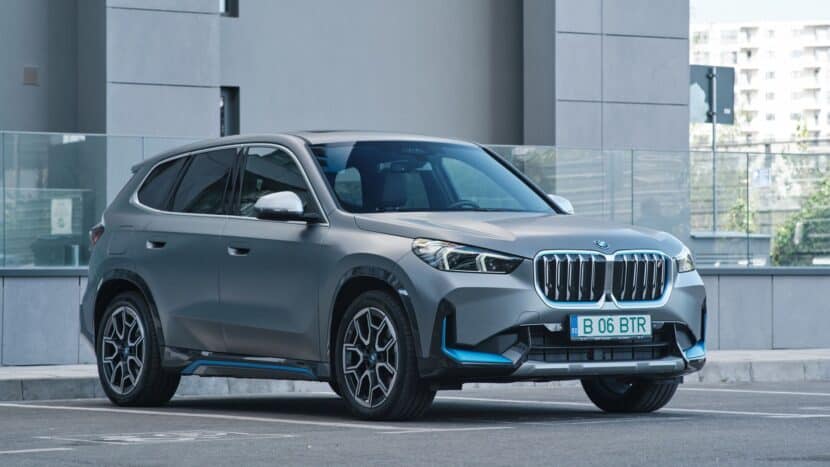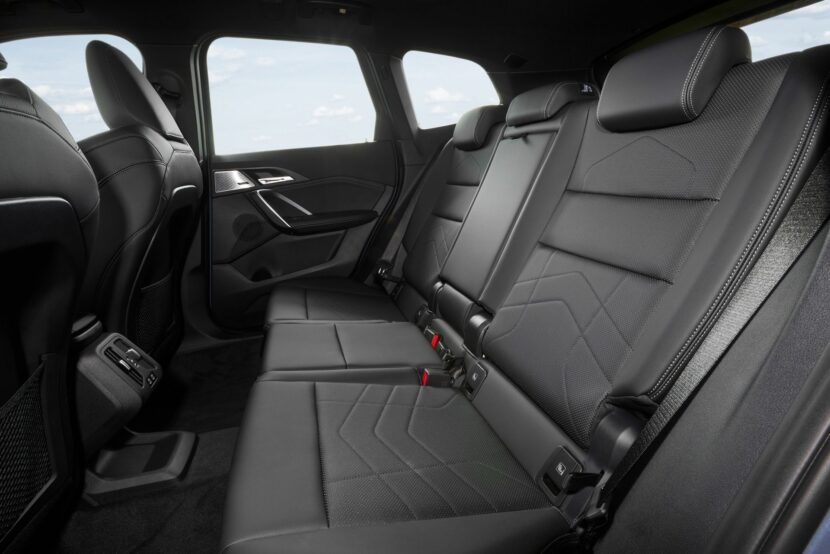BMW’s electric vehicle lineup continues to expand, offering a range of options tailored to different needs and preferences. Among these, the BMW iX1 (U11) and the BMW iX3 (G08) are two models that have gained significant attention in Europe and other markets outside the United States. Both vehicles embody BMW’s commitment to electrification, yet they cater to distinct segments within the EV market. In this article, we’ll dive into a detailed comparison of the BMW iX1 and iX3, focusing on their design, performance, range and overall value.
It’s important to note that while the current iX3 is built on BMW’s flexible CLAR platform, there is a new BMW iX3 (codename NA5) scheduled to arrive in late 2025. This upcoming model will be built on the Neue Klasse platform, a dedicated electric vehicle architecture that promises to enhance performance, efficiency, and design flexibility even further. However, for now, our focus remains on the current iX1 and iX3.
Overview: Two Electric SUVs, Two Distinct Identities

The BMW iX1 is BMW’s entry-level electric SUV, based on the new front-wheel drive X1 platform (U11), and is designed to offer a compact, city-friendly option for urban dwellers and small families. On the other hand, the BMW iX3 is a larger, more premium offering, based on the CLAR (RWD) X3 platform, and is aimed at those who desire more space and a slightly more luxurious experience without jumping into the full-sized iX or iX5. One of the key distinctions between these two models is the fact that the iX1 can be had with a rear-wheel drive or all-wheel drive setup, while the iX3 only sends the power to the rear wheels.

However, the implementation and driving dynamics differ between the two. The iX3 handles with typical BMW balance and rear wheel spin which could be a bit more fun. The iX1 is your typical front-wheel drive with a slight understeer, yet plenty of grip from the front-wheels.
BMW iX1 eDrive20 and BMW iX3 RWD

To make this comparison somewhat fair, we’re going to pick the same drivetrains. In the case of the iX1, that’s the eDrive20 model. The new entry-level iX1 model generates an instantaneously available maximum torque of 250 Nm in addition to the maximum output of 204 hp. The compact SAV accelerates from zero to 100 km/h in 8.6 seconds. Its top speed is electronically limited to 170 km/h.

The BMW iX3 holds a clear advantage due to its more powerful electric motor and larger battery pack. The iX3’s motor produces up to 282 horsepower and 400 Nm of torque, allowing it to accelerate from 0 to 60 mph in just under 6.8 seconds. The iX1, while less powerful, still offers respectable performance for its class, with its electric motor delivering around 282 horsepower and 295 Nm of torque, resulting in a 0 to 60 mph time of around 6.2 seconds.
For the sake of argument, let’s look at the specs of the BMW iX1 xDrive30 also. The dual electric motors make 314 horsepower and 364 lb-ft (494 Nm) of torque, which is enough to hurl the 4,430-pound (2,010-kg) iX1 to 60 mph in 5.3 seconds (0 to 100 km/h in 5.6 seconds).
Electric Range and Charging

In terms of range, the BMW iX3 also has the upper hand, thanks to its larger battery capacity. The iX3 can achieve up to 286 miles (460 km) on a single charge under the WLTP cycle, making it a strong contender for those who require a longer driving range. It has a battery capacity of 74kWh usable. The iX1, with its smaller battery (64.7 kWh), offers a range of up to 272 miles (438 km) under the WLTP cycle, which is still impressive for a vehicle of its size but may require more frequent charging on long trips. The iX1 xDrive30 has a WLTP range of 278 miles (440 km).
BMW iX1 Charging Capacity

The BMW iX1 supports a maximum DC fast charging power of 135 kW. Under optimal conditions, this allows the iX1 to charge from 10% to 80% in approximately 29 minutes. For AC charging at home or public stations, the iX1 can charge at up to 11 kW using a standard three-phase charger, which typically takes around 6.5 to 7 hours to fully charge the battery.
BMW iX3 Charging Capacity

The BMW iX3, being a larger and more premium model, offers slightly faster DC fast charging capabilities with a maximum power of 150 kW. This enables the iX3 to charge from 10% to 80% in about 33 minutes. This is likely due to the different charging curves. The latest electric BMWs come with a more aggressive curve which fills up the battery a bit faster before tapering off. Like the iX1, the iX3 also supports AC charging at a maximum of 11 kW, with a full charge taking roughly 7.5 hours when using a three-phase home charger.
Design and Interior Space

Design-wise, the BMW iX1 and iX3 reflect their respective market positions. The iX1 is compact and features a modern, youthful design that aligns with its role as an entry-level model. It offers a comfortable interior with ample space for passengers and luggage, but its smaller dimensions mean that it’s best suited for those who prioritize maneuverability and convenience over outright space.

The iX3, on the other hand, exudes a more premium feel, with a design that is closely aligned with the standard BMW X3. It also stands out with a more analog interior with iDrive 7, plenty of physical buttons and a smaller screen which is still adored by many customers. Of course, the BMW iX3 offers more interior space, making it a better option for families or those who frequently carry more passengers or cargo. The iX3’s interior is also more luxurious, with higher-quality materials and additional features that enhance comfort and convenience. The BMW iX1 offers a cargo capacity of 490 liters with the rear seats up. The BMW iX3, being a larger vehicle, naturally offers more cargo space. It provides 510 liters of cargo capacity with the rear seats in place.
Pricing
BMW iX1 eDrive20 is priced from €48,400 in Germany while the iX1 xDrive30 starts at €55,500. The BMW iX3, positioned as a more premium electric SUV, is priced at €687,300.
Conclusion: Which One Is Right for You?
The choice between the BMW iX1 and the BMW iX3 ultimately comes down to your specific needs and preferences. If you’re looking for a compact, city-friendly electric SUV with agile handling and sufficient range for daily driving, the iX1 is a great choice. Its all-wheel drive system is also more useful if you often encounter snow.
However, if you need more space, power, and range, the BMW iX3 is the better option. Its RWD system delivers strong performance and stability, particularly on curvy roads, while its more spacious and luxurious interior makes it a more versatile vehicle overall.






















































